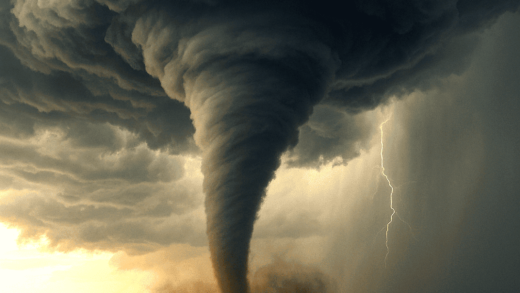This article explores the fascinating world of big cats, detailing their characteristics, habitats, and the importance of conservation. It highlights the differences between big and small cats, the endangered status of big cats, and their critical role in ecosystems. The piece underscores the need for protection to preserve these majestic animals and maintain ecological balance.
The King of Cats: The Siberian Tiger
The biggest cat species is undoubtedly the Siberian Tiger. Weighing up to 660 pounds (300 kg), this magnificent creature reigns as the largest wild cat on the planet. Siberian Tigers can measure up to 10 feet (3 meters) in length, including their tail, which adds a significant length to their impressive stature.
The Siberian Tiger’s thick fur is not just for show; it helps them survive in the frigid climates of their habitat, primarily found in the forests of eastern Russia. These tigers are solitary animals, and their size allows them to hunt large prey, such as deer and wild boar. In fact, their powerful build and strength make them one of the top predators in their ecosystem.
Conservation efforts are crucial for the survival of these majestic cats, as they face threats from habitat loss and poaching. Understanding the Siberian Tiger’s weight and size helps in appreciating its role in the wild and the importance of preserving its environment.
Weighing in on the Biggest: The Weight of Wild Cats
When discussing the largest wild cat weight, the Siberian Tiger sets the bar high. However, other big cats also command attention due to their impressive sizes. For instance, the Bengal Tiger, another heavyweight, can weigh up to 500 pounds (227 kg). The lion, often dubbed the “king of the jungle,” can reach weights of 420 pounds (190 kg).
The weight of these big cats not only reflects their physical power but also influences their hunting techniques and social structures. For example, lions are social animals that live in prides, allowing them to hunt cooperatively, while tigers prefer solitary hunting. Weight plays a vital role in how these animals interact with their environment and each other.
Here are some notable weights of various big cats:
- Siberian Tiger: Up to 660 pounds (300 kg)
- Bengal Tiger: Up to 500 pounds (227 kg)
- Lion: Up to 420 pounds (190 kg)
- Jaguar: Up to 250 pounds (113 kg)
- Cougar: Up to 220 pounds (100 kg)
Understanding the weight of these majestic felines gives insight into their hunting capabilities and survival strategies in the wild.
Top 9 Biggest Cat Species: A Countdown
Here’s a countdown of the top 9 biggest cat species that showcase the diversity and grandeur of the feline family:
- Siberian Tiger – Up to 660 pounds (300 kg)
- Bengal Tiger – Up to 500 pounds (227 kg)
- Lion – Up to 420 pounds (190 kg)
- Jaguar – Up to 250 pounds (113 kg)
- Cougar – Up to 220 pounds (100 kg)
- Leopard – Up to 200 pounds (90 kg)
- Snow Leopard – Up to 120 pounds (54 kg)
- Caracal – Up to 50 pounds (23 kg)
- Serval – Up to 40 pounds (18 kg)
Each of these big cats plays a crucial role in their respective ecosystems. Their sizes not only make them fascinating to observe but also highlight the importance of conservation efforts to ensure their survival.
Where They Roam: Big Cats’ Habitats
The biggest cat species thrive in a variety of habitats across the globe. From dense forests to open savannas, big cats have adapted to their environments to maximize their hunting and survival skills. Here’s a breakdown of where these magnificent creatures call home:
- Siberian Tiger: Found primarily in the snowy forests of eastern Russia, they prefer cold climates where they can camouflage amidst the snow.
- Bengal Tiger: These tigers inhabit the tropical forests of India, Bangladesh, and Nepal, often near water sources which are crucial for their hunting.
- Lion: Lions are mostly found in the grasslands and savannas of Africa, where their social structure allows them to hunt in packs.
- Jaguar: This powerful cat thrives in the rainforests of Central and South America, often near rivers and wetlands.
- Cougar: Cougars have a wide range, inhabiting forests, mountains, and deserts across North and South America.
Understanding these habitats is essential for conservation efforts, as many of these environments are threatened by human activities. Protecting big cats means preserving their homes.
Fun Facts About Each Big Cat
Big cats are not just impressive in size; they also have some fascinating traits that set them apart. Here are some fun facts about each of the biggest cat species:
- Siberian Tiger: They can leap up to 30 feet in a single bound—imagine that!
- Bengal Tiger: Known for their striking orange coat with black stripes, no two Bengal tigers have the same pattern.
- Lion: Male lions have a majestic mane that can grow up to 16 inches long, making them look even more formidable.
- Jaguar: Jaguars have the strongest bite of all big cats, capable of crushing turtle shells and skulls.
- Cougar: Cougars are known for their versatility; they can adapt to various habitats, from dense forests to urban areas.
These traits highlight the uniqueness of each species and the need for their conservation. Learning about these characteristics can foster a deeper appreciation for big cats.
Hunting Skills: How Big Cats Survive
Big cats are exceptional hunters, utilizing a range of strategies to secure their prey. The hunting techniques of these largest wild cats vary significantly among species, influenced by their size, habitat, and social structure. Here’s how they do it:
- Siberian Tiger: They rely on stealth, using their stripes to blend into the forest before pouncing on unsuspecting prey.
- Bengal Tiger: Similar to their Siberian cousins, they stalk through tall grass, using their agility to ambush deer and wild boar.
- Lion: Lions are social hunters, often working in teams to encircle and take down larger prey.
- Jaguar: Jaguars are known for their unique killing technique—biting through the skull of their prey for a quick kill.
- Cougar: Cougars prefer to hunt alone, relying on their powerful legs to leap and tackle their prey from behind.
These hunting skills are crucial for their survival, as they enable big cats to adapt to their environments and prey availability. Understanding these techniques also emphasizes the importance of protecting their habitats to ensure their continued existence.
Big vs. Small: What Sets Them Apart?
The biggest cat species differ significantly from their smaller counterparts in various aspects. One of the most noticeable differences is size, with big cats like the Siberian Tiger and Lion weighing hundreds of pounds compared to domestic cats that typically weigh around 10-20 pounds. This size difference affects their physical abilities, hunting techniques, and even social behaviors.
Big cats possess stronger muscular structures, enabling them to take down larger prey. For example, lions hunt in prides, using teamwork to ambush their prey, while smaller cats often rely on stealth and agility to catch smaller animals. Another critical distinction is their vocalization; big cats can roar, a feature that small cats lack. This ability allows them to communicate over long distances, asserting their territory and attracting mates.
Additionally, big cats have different hunting strategies. They tend to hunt larger animals, which requires them to have more strength and endurance. In contrast, smaller cats often target rodents and birds, relying on their speed and agility. Furthermore, the habitat preferences of big cats usually include vast territories where they can roam and hunt, while smaller cats can thrive in urban environments or smaller areas. Recognizing these differences helps in understanding the unique roles both big and small cats play in their ecosystems.
Are They Endangered? The Status of Big Cats
The status of big cats is alarming, with many species facing the threat of extinction. Factors contributing to their endangered status include habitat loss, poaching, and human-wildlife conflict. For instance, the Siberian Tiger is classified as endangered due to its shrinking habitat and low population numbers, estimated to be around 500 in the wild. Other big cats, such as the Bengal Tiger and the Jaguar, also face similar threats, with their populations declining rapidly.
Conservation efforts are underway to protect these majestic creatures. Organizations are working to create protected areas, enforce anti-poaching laws, and raise awareness about the importance of big cats in ecosystems. For example, initiatives in India focus on preserving Bengal Tigers by establishing wildlife corridors that connect fragmented habitats, allowing for better movement and breeding opportunities.
Understanding the endangered status of big cats is crucial for their survival. It highlights the need for collective action to ensure their protection and the preservation of their habitats. Support for conservation programs can make a significant difference in the future of these incredible animals.
Ecosystem Role: Why Big Cats Matter
Big cats play a vital role in maintaining the balance of their ecosystems. As apex predators, they help regulate prey populations, preventing overgrazing and ensuring biodiversity. For example, when big cats like lions hunt herbivores, they keep those populations in check, which in turn allows vegetation to thrive and supports other wildlife species.
The absence of big cats can lead to a cascade of ecological consequences. In areas where big cats have been eliminated, herbivore populations can explode, leading to habitat degradation and loss of plant species. This shift can affect other animals that rely on those plants for food and shelter, disrupting the entire ecosystem.
Moreover, big cats contribute to the health of their habitats through their hunting practices. Their kills provide food for scavengers and other animals, promoting nutrient cycling in the environment. Protecting big cats is not only essential for their survival but also for the overall health of the ecosystems they inhabit. By preserving these magnificent creatures, we ensure the stability and diversity of wildlife for future generations.





Comments are closed.